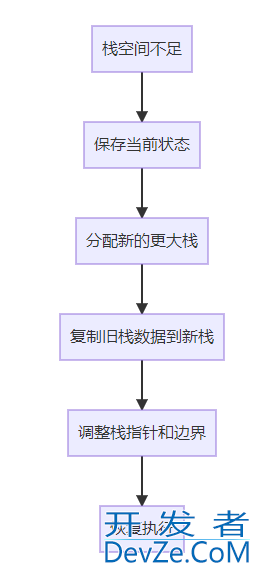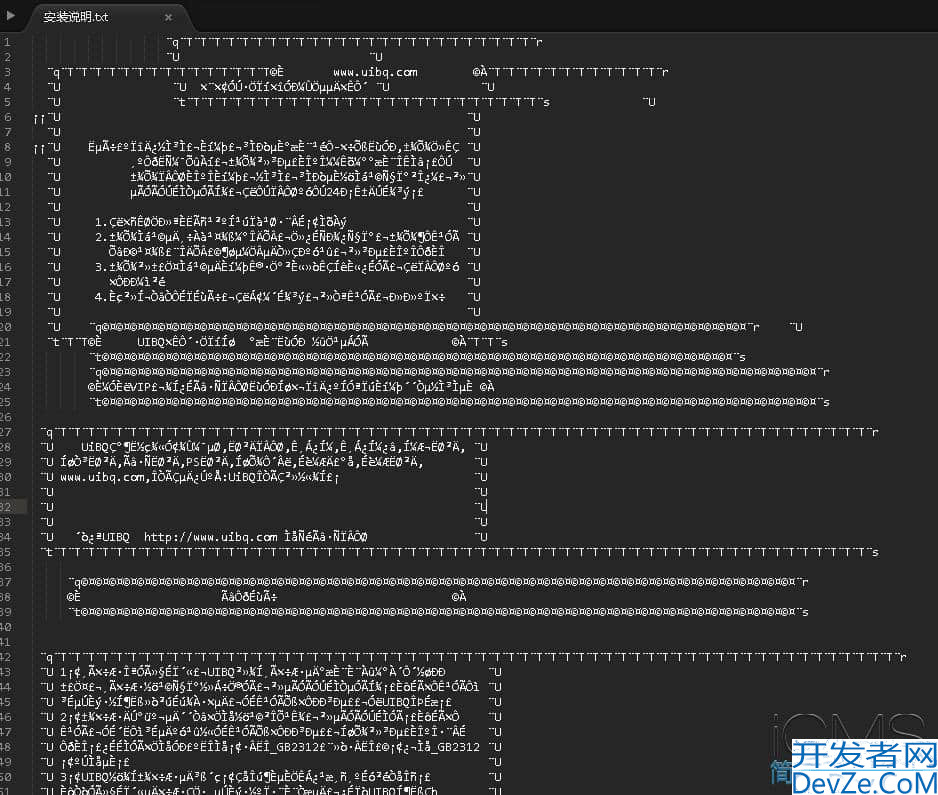C++中map和set的使用示例详解
目录
- 1. 序列式容器和关联式容器
- 1.1 序列式容器
- 1.2 关联式容器
- 2. set系列的使用
- 2.1 set和multiset的参考文档
- 2.2 set类的介绍
- 2.3javascript set的构造函数和迭代器
- 2.4 set的增删查
- 2.5 find和erase的使用样例
- 2.6 multiset和set的差异
- 2.7 两个数组的交集 - 力扣(LeetCode)
- 2.8 环形链表 II - 力扣(LeetCode)
- 3. map系列的使用
- 3.1 map和multimap的参考文档
- 3.2 map类的介绍
- 3.3 pair类型介绍
- 3.4 map的构造
- 3.5 map的增删查
- 3.6 map的数据修改
- 3.7 构造遍历以及增删查改样例
- 3.8 map的迭代器功能和[]功能样例
- 3.9 multimap和map的差异
- 3.10 随机链表的复制 - 力扣(LeetCode)
- 3.11 前K个高频单词 - 力扣(LeetCode)
1. 序列式容器和关联式容器
1.1 序列式容器
核心特征
- 按插入顺序存储:元素的物理存储顺序与插入顺序一致。
- 允许重复元素:可以存储多个相同的值。
- 通过位置访问:通过索引(如数组)或迭代器直接访问元素。
常见容器
vector:动态数组,支持快速随机访问,尾部插入高效。list:双向链表,支持快速插入/删除,但随机访问效率低。deque:双端队列,支持头尾高效插入/删除。array:固定大小数组,编译时确定大小。forward_list:单向链表,内存占用更小。
适应场景
- 需要保持插入顺序(如日志记录,操作历史)。
- 频繁通过索引随机访问(如vector的[ ]操作)。
- 需要高效头尾操作(如deque)。
1.2 关联式容器
- 核心特征
- 按键存储:元素基于键值对(key-value)键本身存储。
- 自动排序:元素按键的排序规则(默认升序)组织。
- 唯一性:
set和map要求键唯一;multiset和multimap允许重复键。
- 常见容器
set:存储唯一键的有序集合。map:存储键值对的有序映射。multiset:允许重复键的有序集合。multimap:允许重复键的有序映射。
- 适用场景
- 需要快速查找(如字典,数据库索引)。
- 需自动排序(如排行榜,有序事件调度)。
- 需要唯一性约束(如用户ID管理)。
2. set系列的使用
2.1 set和multiset的参考文档
点击快速到达
2.2 set类的介绍
set的声明如下,T就是set底层关键字的类型。set默认要求T支持小于比较,如果不支持,可以手动实现一个仿函数传给第二个模板参数。set底层存储数据的内存是从空间配置器上申请的,如果需要可以自己手动实现一个内存池,传给第三个参数。一般情况下我们都不需要传后面的两个模板参数。set的底层是用红黑树实现的,增删查的效率是O(logn),迭代器遍历走的是搜索树的中序遍历,所以遍历后的元素是有序的。
template < class T, // set::key_type/value_type
class Compare = less<T>, // set::key_compare/value_compare
class Alloc = allocator<T> // set::allocator_type
> class set;
2.3 set的构造函数和迭代器
set的构造我们只需关注一下几个即可
//empty (1) 无参默认构造 explicit set(const key_compare& comp = key_compare(), const allocator_type& alloc = allocator_type()); // range (2) 迭代器区间构造 template <class InputIterator> set(InputIterator first, InputIterator last, const key_compare& comp = key_compare(), const allocator_type & = allocator_type()); // copy (3) 拷⻉构造 set (const set& x); // initializer list (5) initializer 列表构造 set (initializer_list<value_type> il, const key_compare& comp = key_compare(), const allocator_type& alloc = allocator_type());
迭代器
// 迭代器是⼀个双向迭代器 iterator -> a bidirectional iterator to const value_type // 正向迭代器 iterator begin(); iterator end(); // 反向迭代器 reverse_iterator rbegin(); reverse_iterator rend();
2.4 set的增删查
#include <IOStream>
#include <set>
using namespace std;
int main()
{
//去重+升序排序
set<int> s;
//去重+降序排序,给一个大于的仿函数
//set<int, greater<int>> s;
//set<int, greater<int>> s = {1,2,7,4,9,6,}; initializer_list初始化
s.insert(2);
s.insert(1);
s.insert(5);
s.insert(6);
//set<int> iterator it = s.begin();
auto it = s.begin();
while (it != s.end())
{
//*it = 1;不能修改里面的值
cout << *it << " ";
it++;
}
cout << endl;
//插入一段initilizer_list的值,已经存在则插入失败
s.insert({1,5,3,2,7,9});
for (auto e : s)
{
cout << e << " ";
}
cout << endl;
//插入string类对象,string类对象比较是按照ascll码来比较大小的
set<string> strset = {"sort","add","insert"};
for (auto &e : strset)
{
cout << e << " ";
}
cout << endl;
return 0;
}
2.5 find和erase的使用样例
erase,find的使用案例:
int main()
{
set<int> s = {2,7,4,3,1,9,5,0};
for (auto&python e : s)
{
coAHXlJwut << e << " ";
}
cout << endl;
//删除最小值
s.erase(s.begin());
for (auto& e : s)
{
cout << e << " ";
}
cout << endl;
//删除输入的值,这个值有可能在,也有可能不在
int x;
cin >> x;
int num = s.erase(x);
if (num == 0)
{
cout << x << "不存在!" << endl;
}
for (auto& e : s)
{
cout << e << " ";
}
cout << endl;
//直接查找,再利用迭代器删除
cin >> x;
auto pos = s.find(x);
if (pos != s.end())
{
s.erase(pos);
}
else
{
cout << x << "不存在" << endl;
}
for (auto& e : s)
{
cout << e << " ";
}
cout << endl;
//算法库中的查找O(n) 不会这样使用
auto pos1 = find(s.begin(), s.end(), x);
//set自己实现的查找O(logn)
auto pos2 = s.find(x);
//利用cout快速实现间接查找
cin >> x;
if (s.count(x))
{
cout << x << "在!" << endl;
}
else
{
cout << x << "不存在!" << endl;
}
return 0;
}
删除一段区间的值
int main()
{
set<int> myset;
for (int i = 1; i < 10; i++)
{
myset.insert(i * 10);//10 20 30 40 50 60 70 80 90
}
for (auto e : myset)
{
cout << e << " ";
}
cout << endl;
//实现查找到的[itlow,itup]包含[30,60]区间
//返回>=30
auto itlow = myset.lower_bound(30);
//返回>60
auto itup = myset.upper_bound(60);
//删除这段区间的值
myset.erase(itlow,itup);
for (auto e : myset)
{
cout << e << " ";
}
cout << endl;
return 0;
}
2.6 multiset和set的差异
multiset和set基本完全相似,主要的区别点在于multiset支持键值冗余,那么insert/find/count/erase都围绕着支持键值冗余有所差异。
int main()
{
multiset<int> s = {4,6,4,3,6,7,8,9,2,5,3,7,8,9};
auto it = s.begin();
while (it != s.end())
{
cout << *it << " ";
++it;
}
cout << endl;
//相比较set不同的是,x可能会存在多个,find查找的是中序的第一个
int x;
cin >> x;
auto pos = s.find(x);
while (pos != s.end() && *pos == x)
{
cout << *pos << " ";
++pos;
}
cout << endl;
//相比set不同的是count会返回x的实际个数
cout << s.count(x) << endl;
//相比set不同的是erase会删掉里面的所有的x
s.erase(x);
for (auto e : s)
{
cout << e << " ";
}
cout << endl;
return 0;
}
2.7 两个数组的交集 - 力扣(LeetCode)
题目连接: 349. 两个数组的交集
解题思路:两个数组依次比较,小的++,相等的就是交集,同时++,其中一个结束就结束了代码实现:
class Solution {
public:
vector<int> intersection(vector<int>& nums1, vector<int>& nums2) {
//这里用set实现了对数组的排序+去重
set<int> s1(nums1.begin(),nums1.end());//用一段迭代器区间初始化
set<int> s2(nums2.begin(),nums2.end());
//小的++,相等就是交集
vector<int> ret;
auto it1 = s1.begin();
auto it2 = s2.begin();
while(it1 != s1.end() && it2 != s2.end())
{
if(*it1 < *it2) it1++;
else if (*it1 > *it2) it2++;
else
{
ret.push_back(*it1);
it1++;
it2++;
}
}
return ret;
}
};
2.8 环形链表 II - 力扣(LeetCode)
题目链接: 142. 环形链表 II
解题思路:遍历这个环形链表,如果count为0,就把此节点插入进set,如果不为0,则此节点为入口点。代码实现:
class Solution {
public:
ListNode *detectCycle(ListNode *head) {
set<ListNode*> s;
ListNode* cur = head;
while(cur)
{
if(s.count(cur))
return cur;//等于1即为入口点
else
s.insert(cur);
cur = cur -> next;
}
return nullptr;
}
};
3. map系列的使用
3.1 map和multimap的参考文档
点击快速到达
3.2 map类的介绍
map的声明如下,Key就是map底层关键字的类型,T是map底层Value的类型,map默认要求Key支持小于比较,如果不支持或者需要的话可以自行实现仿函数传给第二个模板参数。map底层存储数据的内存是从空间配置器申请的。一般情况下我们都不需要传后面两个模板参数。map的底层使用红黑树实现的,增删查改的效率是O(logn),迭代器遍历走的是中序遍历,所以Key的值是有序的。
template < class Key, // map::key_type class T, // map::mapped_type class Compare = less<Key>, // map::key_compare class Alloc = allocator<pair<const Key,T> > // map::allocator_type > class map
3.3 pair类型介绍
map底层红黑树节点中的数据,使用pair<Key,T>存储键值对数据。
pair是一个类模板,里面有两个成员变量,一个是first,一个是second。
typedef pair<const Key, T> value_type;
template <class T1, class T2>
struct pair
{
typedef T1 first_type;
typedef T2 second_type;
T1 first;
T2 second;
pair() : first(T1()), second(T2())
{}
pair(const T1& a, const T2& b) : first(a), second(b)
{}
template<class U, class V>
pair(const pair<U, V>& pr) : first(pr.first), second(pr.second)
{}
};
template <class T1, class T2>
inline pair<T1, T2> make_pair(T1 x, T2 y)
{
return (pair<T1, T2>(x, y));
}
3.4 map的构造
map的构造我们只需关注以下接口即可
map支持正向迭代器遍历和反向迭代器遍历,遍历默认按Key的升序,因为底层是二叉搜索树,走的是中序遍历。支持迭代器也就支持范围for。map支持value数据的修改,但不支持Key的修改。修改关键字的数据破坏了底层搜索树的结构。
// empty (1) ⽆参默认构造 explicit map (const key_compare& comp = key_compare(), const allocator_type& alloc = allocator_type()); // range (2) 迭代器区间构造 template <class InputIterator> mwww.devze.comap (InputIterator first, InputIterator last, const key_compare& comp = key_compare(), const allocator_type& = allocator_type()); // copy (3) 拷⻉构造 map (const map& x); // initializer list (5) initializer 列表构造 map (initializer_list<value_type> il, const key_compare& comp = key_compare(), const allocator_type& alloc = allocator_type()); // 迭代器是⼀个双向迭代器 iterator -> a bidirectional iterator to const value_type // 正向迭代器 iterator begin(); iterator end(); // 反向迭代器 reverse_iterator rbegin(); reverse_iterator rend();
3.5 map的增删查
map的增删查关注以下接口即可
map的增接口,插入的是pair的键值对数据,跟set有所不同,但是查和删的接口只用关键字Key,跟set完全相似。不过fin返回的是iterator,不仅仅可以找到Key在不在,还能找到映射的Value,同时通过迭代还能修改Value。
Member types key_type->The first template parameter(Key) mapped_type->The second template parameter(T) value_type->pair<const key_type, mapped_type> // 单个数据插⼊,如果已经key存在则插⼊失败,key存在相等value不相等也会插⼊失败 pair<iterator, bool> insert(const value_type& val); // 列表插⼊,已经在容器中存在的值不会插⼊ void insert(initializer_list<value_type> il); // 迭代器区间插⼊,已经在容器中存在的值不会插⼊ template <class InputIterator> void insert(InputIterator first, InputIterator last); // 查找k,返回k所在的迭代器,没有找到返回end() iterator find(const key_type& k); // 查找k,返回k的个数 size_type count(const key_type& k) const; // 删除⼀个迭代器位置的值 iterator erase(const_iterator posithttp://www.devze.comion); // 删除k,k存在返回0,存在返回1 size_type erase(const key_type& k); // 删除⼀段迭代器区间的值 iterator erase(const_iterator first, const_iterator last); // 返回⼤于等k位置的迭代器 iterator lower_bound(const key_type& k); // 返回⼤于k位置的迭代器 const_iterator lower_bound(const key_type& k) const;
3.6 map的数据修改
map第一个支持修改的方式是通过迭代器,迭代器遍历时或者find返回Key所在的iterator修改。map还有一个非常重要的修改接口operator[],但是operator[]不仅仅支持数据的修改,还支持插入数据和查找数据,所以它是一个多功能复合接口。
Member types
key_type->The first template parameter(Key)
mapped_type->The second template parameter(T)
value_type->pair<const key_type, mapped_type>
// 查找k,返回k所在的迭代器,没有找到返回end(),如果找到了通过iterator可以修改key对应的mapped_type值
iterator find(const key_type& k);
// ⽂档中对insert返回值的说明
// The single element versions (1) return a pair, with its member pair::first set to an iterator pointing to either the newly inserted element or to theelement with an equivalent key in the map.The pair::second element in the pairis set to true if a new element was inserted or false if an equivalent keyalready existed.
// insert插⼊⼀个pair<key, T>对象
// 1、如果key已经在map中,插⼊失败,则返回⼀个pair<iterator,bool>对象,返回pair对象first是key所在结点的迭代器,second是false
// 2、如果key不在map中,插⼊成功,则返回⼀个pair<iterator,bool>对象,返回pair对象first是新插⼊key所在结点的迭代器,second是true
// 也就是说⽆论插⼊成功还是失败,返回pair<iterator,bool>对象的first都会指向key所在的迭代器
// 那么也就意味着insert插⼊失败时充当了查找的功能,正是因为这⼀点,insert可以⽤来实现
operator[]
// 需要注意的是这⾥有两个pair,不要混淆了,⼀个是map底层红⿊树节点中存的pair<key, T>,另⼀个是insert返回值pair<iterator, bool>
pair<iterator, bool> insert(const value_type & val);
mapped_type& operator[] (const key_type& k);
// operator的内部实现
mapped_type& operator[] (const key_type& k)
{
// 1、如果k不在map中,insert会插⼊k和mapped_type默认值(默认值是用默认构造构造的),同时[]返回结点中存储mapped_type值的引⽤,那么我们可以通过引⽤修改返映射值。所以[]具备了插⼊ + 修改功能
// 2、如果k在map中,insert会插⼊失败,但是insert返回pair对象的first是指向key结点的迭代器,返回值同时[]返回结点中存储mapped_type值的引⽤,所以[]具备了查找 + 修改的功能
pair<iterator, bool> ret = insert({ k, mapped_type() });
iterator it = ret.first;
return it->second;
}
3.7 构造遍历以及增删查改样例
#include <map>
int main()
{
pair<string, string> kv1 = {"left","左边"};
//initializer_list构造以及迭代遍历
map<string, string> dict = { {"left","左边"},{"right","右边"},{"insert","插入"},{"erase","删除"}};
map<string, string>::iterator it = dict.begin();
while (it != dict.end())
{
//cout << *it << " "; //pair不支持流提取和流插入,是一个结构体
//cout << (*it).first << ":" << (*it).second << endl;;
cout << it->first << ":" << it->second << endl;
//cout << it.operator->()->first << ":" << it.operator->()->second << endl;//原生写法
++it;
}
//map的插入
//insert插入pair的四种方式,对比之下最后一种最方便
pair<string, string> kv2("first","第一个");
dict.insert(kv2);
//匿名对象
dict.insert(pair<string, string>("second", "第二个"));
//make_pair
dict.insert(make_pair("sort","排序"));//make_pair是一个函数模板,不用声明模板参数,自己推导,在底层构造一个pair对象再返回
//最后一种最好用
dict.insert({"auto","自动的"});//支持隐式类型转换
//支持范围for遍历
for (auto& e : dict)
{
cout << e.first << ":" << e.second << endl;
}
cout << endl;
//结构化绑定 C++17
//for (const auto& [k,v] : dict)
//{
// cout << k << ":" << v << endl;
//}
string str;
while (cin >> str)
{
auto ret = dict.find(str);
if (ret != dict.end())
{
cout << "->" << ret->second << endl;
}
else
{
cout << "无此单词,请重新输入" << endl;
}
}
//first是不能被修改的,但是second可以被修改
return 0;
}
3.8 map的迭代器功能和[]功能样例
统计水果出现的次数
#include <iostream>
#include <string>
#include <map>
using namespace std;
int main()
{
//统计水果出现的次数
string arr[] = { "苹果", "西瓜", "苹果", "西瓜", "苹果", "苹果", "西瓜","苹果", "香蕉", "苹果", "香蕉" };
map<string, int> countMap;
//先查找水果在不在map中
//1.不在,说明水果第一次出现,则插入水果{水果,1}
//2.在,则查找到的水果对应的次数+1
for (const auto& str : arr)
{
auto ret = countMap.find(str);
if (ret == countMap.end())//则证明在
{
countMap.insert({str,1});
}
//否则,在
else
{
ret->second++;
}
}
//countMap[str]++; 第二种写法
for (const auto& e : countMap)
{
cout << e.first << ":" << e.second << endl;
}
cout << endl;
return 0;
}
3.9 multimap和map的差异
multimap和map的使用基本完全类似,主要区别是multimap支持关键字Key冗余,那么insert/find/count/erase都围绕着支持键值冗余有所差异。这里和set和multiset基本一样,比如find时有多个key返回中序中的第一个。其次是multimap不支持[],因为支持key冗余,[]就只能支持插入了,不支持修改。
3.10 随机链表的复制 - 力扣(LeetCode)
题目连接: 138. 随机链表的复制
解题思路: 让原链表与拷贝链表通过map建立映射关系代码实现:
class Solution {
public:
Node* copyRandomList(Node* head) {
map<Node*,Node*> nodeMap;
Node* copyhead = nullptr,*copytail = nullptr;//定义一个头一个尾
Node* cur = head;
while(cur)
{
//如果为空
if(copytail == nullptr)
{
copyhead = copytail = new Node(cur->val);
}
//如果不为空
else
{
copytail->next = new Node(cur->val);
copytail = copytail->next;
}
//让原节点和拷贝节点建立map
nodeMap[cur] = copytail;
cur = cur->next;
}
//处理random
cur = head;
Node* copy = copyhead;
while(cur)
{
//原链表的random为空,则拷贝链表的random也为空
if(cur->random == nullptr)
{
copy->random = nullptr;
}
else
{
copy->random = nodeMap[cur->random];
}
cur = cur->next;
copy = copy->next;
}
return copyhead;
}
};
3.11 前K个高频单词 - 力扣(LeetCode)
题目链接: 692. 前K个高频单词
解题思路1:用排序找前k个单词,因为map中已经对Key单词排序过,也就意味着遍历map时次序相同的单词,字典序小的在前面,字典序大的在后面,那么我们将数据放到vector中用一个稳定的排序就可以实现上面特殊的要求,但sort底层是快排,是不稳定的,所以我们要用table_sort,是稳定的。
代码实现:
class Solution {
public:
struct Compare
{
bool operator()(const pair<string,int>& kv1,const pair<string,int>& kv2)
{
return kv1.second > kv2.second;
}
};
vector<string> topKFrequent(vector<string>& words, int k) {
//统计次数
map<string,int> countMap;
for(auto &str : words)
{
countMap[str]++;
}
vector<pair<string,int>> v(countMap.begin(),countMap.end());//迭代器区间初始化
stable_sort(v.begin(),v.end(),Compare());
vector<string> retv;
for(size_t i = 0; i < k ; ++i)
{
retv.push_back(v[i].first);//取的是每个pair对象中的单词
}
return retv;
}
};
解题思路2:
将map统计出来的次序,放到vector中排序,或者放到priority_queue中选出前k个,利用仿函数强制控制次数相等的,字典序小的在前面。代码实现:class Solution {
public:
struct Compare
{
bool operator()(const pair<string, int>& x, const pair<string, int>& y)
{
return x.second > y.second || (x.second == y.second && x.first < y.first);;
}
};
vector<string> topKFrequent(vector<string>& words, int k)
{
map<string, int> countMap;
for (auto& e : words)
{
countMap[e]++;
}
vector<pair<string, int>> v(countMap.begin(), countMap.end());
// 仿函数控制降序,仿函数控制次数相等,字典序⼩的在前⾯
sort(v.begin(), v.end(), Compare());
// 取前k个
vector<string> strV;
for (int i = 0; i < k; ++i)
{
strV.push_back(v[i].first);
}
return strV;
}
};
class Solution {
public:
struct Compare
{
bool operator()(const pair<string, int>& x, const pair<string, int>& y)
const
{
// 要注意优先级队列底层是反的,⼤堆要实现⼩于⽐较,所以这⾥次数相等,想要字典序⼩的在前⾯要⽐较字典序⼤的为真
return x.second < y.second || (x.second == y.second && x.first > y.first);
}
};
vector<string> topKFrequent(vector<string>& words, int k)
{
map<string, int> countMap;
for (auto& e : words)
{
countMap[e]++;
}
// 将map中的<单词,次数>放到priority_queue中,仿函数控制⼤堆,次数相同按照字典序规则排序
priority_queue<pair<string, int>, vector<pair<string, int>>, Compare>p(countMap.begin(), countMap.end());
vector<string> strV;
for (int i = 0; i < k; ++i)
{
strV.push_back(p.top().first);
p.pop();
}
return strV;
}
到此这篇关于C++ map和set的使用的文章就介绍到这了,更多相关C++ map和set使用内容请搜索编程客栈(www.devze.com)以前的文章或继续浏览下面的相关文章希望大家以后多多支持编程客栈(www.devze.com)!






 加载中,请稍侯......
加载中,请稍侯......
精彩评论